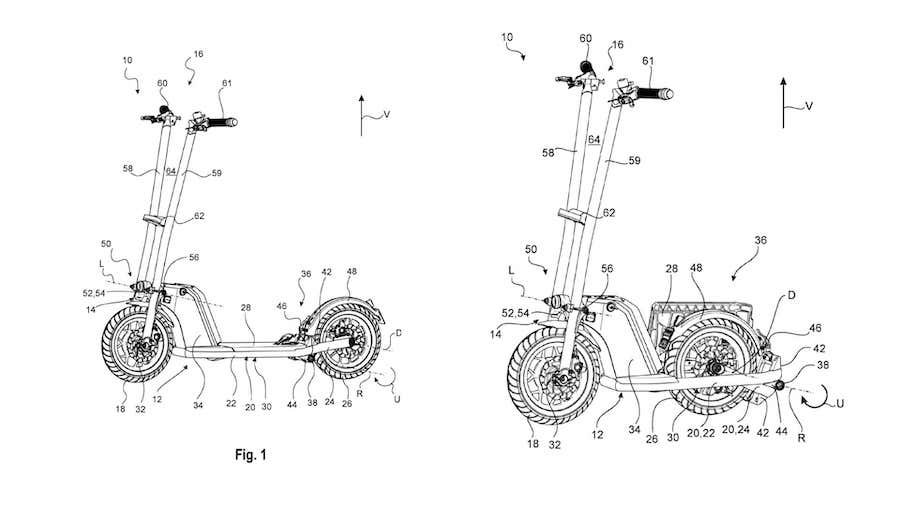Is BMW Working On A Small Electric Scooter With A Folding Frame?

Electric scooters and motorcycles are gaining popularity in Europe thanks to their convenience and practicality. In the past, we’ve seen lots of automakers venture into the lightweight e-mobility scene. In 2022, for example, Bugatti unveiled its sporty little electric scooter based on the Chiron hypercar. Meanwhile in 2023, McLaren’s Lavoie electric scooter made headlines thanks to its sporty and elegant design.
This time around, it seems that yet another automotive and motorcycle giant is eyeing a grand entrance into the e-scooter world. BMW is no stranger to electric two-wheelers, as it has a number of e-bikes and electric scooters such as the CE-04 in its roster. It recently filed a patent for a new folding electric scooter, much like the e-scooters we’ve been seeing on European roads for quite some time now. As of the moment, the scooter doesn't have a name just yet, and it’s filed under “Electric Small-Sized Vehicle,” per the patent.
BMW describes the electric scooter as an “electric small-sized vehicle, in particular an electric scooter, having a rear wheel, a frame, a support with a footboard and a wheel folding mechanism.” So yes, it’s a folding e-scooter that’s designed to be easily integrated into the public transportation system. It makes use of an interesting rear wheel folding mechanism that allows for even more compact proportions than other e-scooters. Like other e-scooters on the market, BMW’s model also has fold-down handlebars.
The rear wheel folding mechanism is pretty interesting, as it doesn’t fold the wheel over the footboard, but rather has a slot where the rear wheel is housed. “The wheel folding mechanism has a first joint with a first pivot axis. The vehicle is adjustable from an unfolded position into a folded position via the joint. The front support section is connected to the rear support section by the first joint. In the unfolded position, the rear wheel is positioned in an outer position where the rear wheel is arranged outside of the receiving area, and in the folded position, the rear wheel is positioned in an inner position where the rear wheel is at least partly arranged within the receiving area.”
On the performance side of the equation, BMW mentions that the scooter will be powered by an electric hub motor on the front wheel. Power is stated to be no more than 500 watts, or “not more than 1400 watts if at least 60 percent of the power is used for self-balancing.” Now, whether or not the electric scooter under development is indeed a self-balancing scooter is up for debate, as the patent seems to keep this information rather vague.
Nevertheless, should it be homologated for street use in Europe, it’ll likely have a top speed of no more than 20 kilometers per hour (12.4 miles per hour). On top of that, BMW’s patent also highlights a handy “walk mode” feature, wherein the motor provides power up to six kilometers per hour (3.7 miles per hour), useful for transporting the scooter in walking areas with uphill gradients or for longer periods of time.
It’s worth noting that the patent doesn’t reveal the dimensions of the scooter, but judging from the way it looks when fully folded up, it seems to be compact enough to fit in the back of even a small hatchback, let alone inside a bus or train. The handlebar is also very interesting as it’s a two-piece unit that flows up from the front wheel. Apart from making the scooter look cool, it seems that this design feature is meant to facilitate quick and easy folding, as well.
While there’s no release date for this new electric scooter, it’s certainly interesting to see BMW working on micromobility devices like this e-scooter. More likely than not, this contraption will be sold in the European market, where e-scooters and e-bikes are fast becoming integral parts of the transportation sector.


